Fleas, those tiny yet mighty pests, can wreak havoc on your beloved furry friend. From incessant scratching to potential health risks, dealing with a flea infestation is every pet owner’s nightmare. But fear not! In this comprehensive guide, we’ll delve into everything you need to know to protect your dog from fleas, ensuring their health and happiness.
Contents Overview
Understanding Fleas: The Tiny Menace
Fleas, those seemingly insignificant creatures, wield a significant impact on the health and comfort of our furry companions. Understanding their biology, behavior, and lifecycle is paramount in effectively combating these tiny menaces.
Biology of Fleas:
- Species: Fleas belong to the order Siphonaptera, with over 2,000 species worldwide. The most common flea affecting dogs is Ctenocephalides felis (the cat flea), which can also infest cats and other animals.
- Physical Characteristics: Fleas are small, wingless insects, typically measuring between 1 to 4 millimeters in length. They have flattened bodies, allowing them to move easily through fur, and powerful hind legs for jumping long distances relative to their size.
- Feeding Habits: Fleas are ectoparasites, meaning they feed on the blood of their host, including dogs, cats, and even humans. Their specialized mouthparts are adapted for piercing the skin and sucking blood, often causing irritation and discomfort to the host.
Flea Life Cycle:
Understanding the stages of the flea life cycle is crucial for effective control and prevention:
- Egg Stage: Adult female fleas lay eggs on the host animal, which then fall off into the environment, such as bedding, carpets, and outdoor areas.
- Larval Stage: Flea eggs hatch into larvae within 1 to 12 days, depending on environmental conditions. Larvae are small, legless, and avoid light, preferring to reside in dark, humid environments like carpets, soil, and organic debris.
- Pupal Stage: Larvae spin cocoons and develop into pupae, where they undergo metamorphosis. Pupae are resistant to environmental factors and can remain dormant for weeks or even months, making them challenging to eradicate.
- Adult Stage: Once mature, adult fleas emerge from the pupal cocoon and seek a host for feeding and reproduction, restarting the cycle.
Flea Behavior and Habitat:
- Host Preference: While fleas commonly infest dogs and cats, they can also feed on other mammals and birds, including humans. However, they often have a preferred host species.
- Environmental Habitat: Fleas thrive in warm, humid environments, with optimal conditions for development between 70-85°F (21-30°C) and 70-85% humidity. Indoors, they inhabit areas frequented by pets, such as bedding, carpets, and upholstery, while outdoors, they may lurk in shaded areas of the yard.
- Jumping Ability: Fleas are exceptional jumpers, capable of leaping up to 150 times their body length. This remarkable agility allows them to transfer easily between hosts and navigate their environment efficiently.
Health Risks Associated with Fleas:
- Skin Irritation: Flea bites can cause itching, redness, and inflammation in dogs, leading to discomfort and skin damage.
- Allergic Reactions: Some dogs may develop flea allergy dermatitis (FAD), an allergic reaction to flea saliva, resulting in severe itching, hair loss, and secondary skin infections.
- Transmission of Diseases: Fleas can transmit various diseases and parasites to dogs, including tapeworms (via ingested fleas), bartonellosis (cat scratch fever), and certain bacterial infections.
Signs of a Flea Infestation: Recognizing the Red Flags
Identifying a flea infestation early is crucial for swift intervention and preventing further discomfort to your furry friend. Recognizing the signs of a flea infestation involves keen observation and an understanding of how these tiny pests manifest their presence.
Signs of a Flea Infestation:
- Excessive Scratching: If your dog is constantly scratching, biting, or licking their fur, it may indicate flea activity. Flea bites cause irritation and discomfort, prompting your dog to seek relief through excessive grooming behaviors.
- Visible Fleas: Conduct a thorough examination of your dog’s fur, particularly around the neck, back, and tail areas. Fleas are fast-moving insects, reddish-brown in color, and approximately the size of a pinhead. Additionally, look for dark specks resembling pepper (flea dirt), which are flea feces containing digested blood.
- Skin Irritation: Flea bites often result in red, inflamed skin, especially in sensitive areas such as the groin, armpits, and abdomen. Some dogs may develop papules, pustules, or hot spots due to allergic reactions to flea saliva.
- Hair Loss: Chronic flea infestations can lead to hair loss (alopecia), particularly around the base of the tail, lower back, and inner thighs. Intense scratching and biting can cause trauma to the skin, resulting in patchy fur and secondary infections.
- Flea Allergy Dermatitis (FAD): Dogs with flea allergy dermatitis (FAD) exhibit heightened sensitivity to flea saliva, experiencing severe itching, redness, and self-inflicted wounds. FAD can exacerbate the signs of a flea infestation and may require veterinary intervention for management.
Additional Indicators:
- Flea Eggs and Larvae: While less visible than adult fleas, flea eggs and larvae may be present in your dog’s environment, such as bedding, carpets, and furniture. Look for tiny white eggs resembling grains of salt and small, white worm-like larvae in dark, secluded areas.
- Flea Dirt on Bedding: Check your dog’s bedding for signs of flea dirt, which appears as dark, pepper-like specks. Flea dirt is composed of partially digested blood and is a reliable indicator of flea activity in the vicinity.
- Observing Other Pets: If you have multiple pets in your household, observe their behavior and grooming habits for signs of fleas. Fleas can quickly spread between animals, necessitating comprehensive treatment for all affected pets.
The Flea Prevention Arsenal: Strategies for Success
Prevention is the cornerstone of effective flea control, offering proactive measures to safeguard your dog from these persistent pests. Building a comprehensive flea prevention arsenal involves combining various strategies tailored to your dog’s lifestyle and environmental factors.
The Flea Prevention Arsenal:
- Regular Grooming:
- Brushing: Regularly brush your dog’s coat with a flea comb to remove adult fleas, flea dirt, and loose hair. Focus on areas where fleas tend to hide, such as the neck, back, and tail.
- Bathing: Bathe your dog with a flea-repellent shampoo recommended by your veterinarian. Use lukewarm water and thoroughly lather the shampoo into your dog’s coat, paying attention to areas prone to flea infestation. Rinse well to ensure all shampoo residue is removed.
- Environmental Control:
- Vacuuming: Regularly vacuum your home, including carpets, rugs, upholstery, and crevices where flea eggs and larvae may accumulate. Dispose of the vacuum bag or clean the canister promptly to prevent fleas from re-infesting your living space.
- Washing: Launder your dog’s bedding, blankets, and washable toys in hot water (at least 140°F or 60°C) to kill flea eggs, larvae, and adults. Dry items thoroughly on high heat to ensure any remaining fleas are eliminated.
- Flea Treatments:
- Topical Treatments: Apply monthly spot-on treatments or flea collars recommended by your veterinarian. These products contain active ingredients that kill and repel fleas, providing continuous protection for your dog.
- Oral Medications: Administer chewable tablets or oral solutions prescribed by your vet to control fleas from within. These medications disrupt the flea life cycle by targeting adult fleas, larvae, or eggs, depending on the formulation.
- Yard Maintenance:
- Mowing: Keep your lawn trimmed short to reduce flea habitat and exposure. Regular mowing exposes flea larvae and pupae to sunlight, decreasing their survival rate.
- Outdoor Treatments: Use pet-safe flea sprays, granules, or nematodes to treat your yard and outdoor living areas. Focus on shaded areas, moist soil, and areas frequented by your pets to target flea populations effectively.
Additional Tips for Flea Prevention:
- Year-Round Vigilance: Fleas can thrive in indoor environments year-round, so maintain your flea prevention efforts even during colder months when flea activity may seem diminished.
- Consistency is Key: Stick to a regular flea prevention schedule recommended by your veterinarian to ensure continuous protection for your dog.
- Multi-Modal Approach: Combining multiple flea prevention methods, such as grooming, environmental control, and flea treatments, enhances efficacy and reduces the likelihood of flea infestations.
Dealing with a Flea Infestation: A Step-by-Step Guide
Dealing with a flea infestation can be a challenging and frustrating experience for pet owners. However, with a systematic approach and the right strategies, you can effectively eradicate fleas from your home and ensure the well-being of your furry companion. Here’s a comprehensive step-by-step guide to tackling a flea infestation:
Step-by-Step Guide to Dealing with a Flea Infestation:
- Assessment:
- Inspect Your Dog: Begin by thoroughly examining your dog’s fur for signs of fleas, including adult fleas, flea dirt, and skin irritation. Pay close attention to areas where fleas commonly hide, such as the base of the tail and around the neck.
- Check Your Home: Conduct a detailed inspection of your home environment, focusing on areas where your dog spends the most time, such as bedding, carpets, rugs, and furniture. Look for flea eggs, larvae, and pupae, as well as adult fleas and flea dirt.
- Treatment Plan:
- Consult Your Veterinarian: Seek guidance from your veterinarian to develop a comprehensive treatment plan tailored to your dog’s specific needs. Your vet may recommend topical flea treatments, oral medications, or environmental control measures based on the severity of the infestation and your dog’s health status.
- Follow Veterinary Recommendations: Adhere to your veterinarian’s recommendations regarding flea control products, dosages, and application methods. It’s essential to use veterinary-approved products to ensure safety and efficacy for your dog and household.
- Home Remediation:
- Vacuuming: Use a high-powered vacuum cleaner with a HEPA filter to thoroughly vacuum your home, paying particular attention to areas frequented by your dog. Vacuum carpets, rugs, upholstery, and baseboards to remove flea eggs, larvae, and adults.
- Washing: Launder your dog’s bedding, blankets, and washable toys in hot water (at least 140°F or 60°C) to kill fleas and their offspring. Dry items on high heat to ensure any remaining fleas are eliminated.
- Flea Control Products:
- Use Vet-Approved Products: Apply veterinary-approved flea control products to your dog, such as topical spot-on treatments or oral medications. These products kill adult fleas, disrupt the flea life cycle, and provide long-lasting protection against re-infestation.
- Environmental Treatments: Use flea control products specifically designed for indoor and outdoor use to target fleas in your home and yard. Treat carpets, rugs, furniture, and outdoor living areas according to product instructions to eliminate fleas at all life stages.
- Follow-Up:
- Monitor Your Dog: Keep a close eye on your dog for signs of improvement, such as reduced scratching and skin irritation. If symptoms persist or worsen, consult your veterinarian for further evaluation and treatment.
- Maintain Preventative Measures: Once you’ve successfully eradicated fleas from your home and dog, continue to implement preventative measures to prevent re-infestation. Maintain regular grooming, flea treatments, and environmental control practices to keep fleas at bay.
Bottom Line
Protecting your dog from fleas is a continuous battle, but armed with knowledge and the right strategies, victory is within reach. By understanding fleas, recognizing the signs of infestation, and implementing preventative measures, you can ensure your dog’s well-being and keep the flea fiasco at bay. Stay vigilant, stay proactive, and keep your furry friend flea-free for a happy and healthy life together!

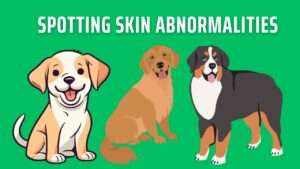




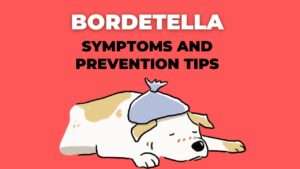
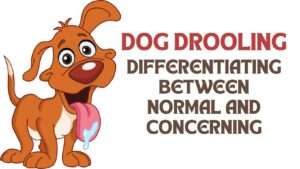




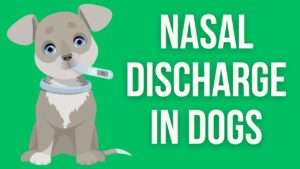




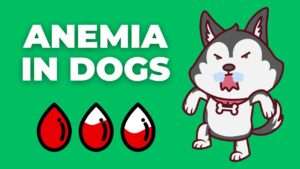
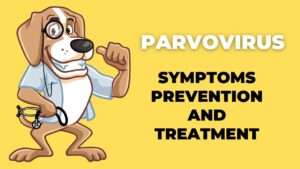
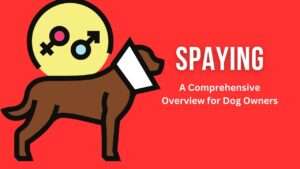
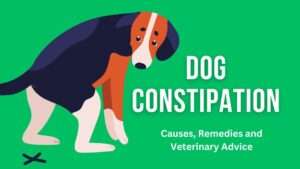

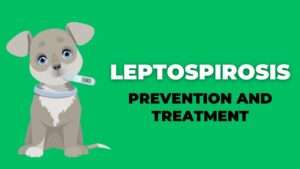
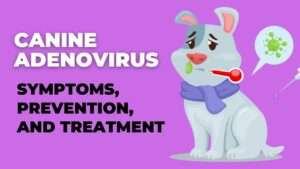
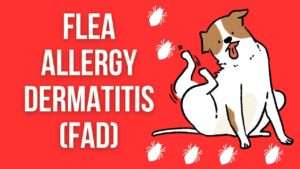
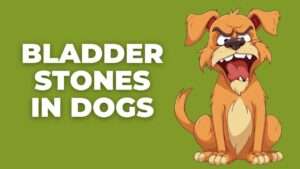
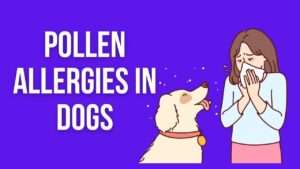







+ There are no comments
Add yours